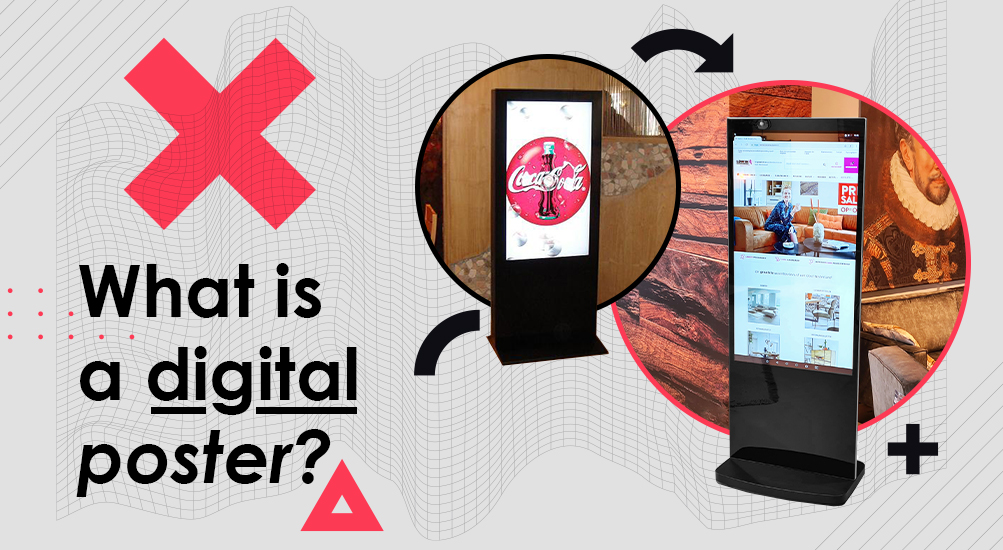
What Is a Digital Poster?
In its most basic sense, a digital poster is a digital signage display screen that is used to show multimedia content, such as images, videos, and animations. These screens are commonly found in public spaces, such as shopping centres, airports, and train stations, and are used to advertise products, services, and events. However, the term ‘digital poster’ has evolved over time and can now refer to both the screen itself and the media that is displayed on it.
Let’s start by looking at the screens themselves. In the early days of the digital signage market really emerging in the early 2000s, the term ‘digital poster’ was often used as a way to describe digital signage displays, especially if they were being used in a portrait orientation. As the terminology for wall mounted commercial screens started shifting towards names like “digital advertising displays” and “commercial flat panel displays” the term ‘digital poster’ became synonymous with freestanding digital posters (sometimes referred to as ‘digital totems’ – one of many examples of a market that is still fragmented, especially when it comes to consistent terminology).
One of the key advantages of digital posters is their flexibility. Unlike traditional printed posters, which are static and unchanging, digital posters can be updated and changed quickly and easily. This means that users can display a range of different messages throughout the day, or even in response to changing circumstances.
Another advantage of digital posters is their interactivity. Many digital posters are available as touch screens; which allow customers to interact with the content on display. This can be particularly useful in retail environments, where customers can use the touch screens to browse products, find information, or even make purchases.
Now let’s look at the media that is displayed on digital posters. As mentioned earlier, digital posters are often used for advertising purposes, and the content that is displayed is typically designed to be attention-grabbing and persuasive.
The rise of content creation platforms such as Canva has made it easier than ever for businesses to create their own digital poster media content. These platforms offer a range of templates and design tools that allow even those with no graphic design experience to create professional-looking poster designs.
However, it’s important to remember that designing effective digital poster media is not just about creating something that looks good. Effective digital posters need to be designed with the target audience in mind, and should use persuasive messaging and calls-to-action to encourage viewers to take action.
So, in conclusion, a digital poster is a versatile and flexible advertising tool that can be used to display a wide range of multimedia content. Whether you’re looking to promote a new product, advertise an event, or simply attract attention to your business, a digital poster can help you to achieve your goals.
However, as with any advertising tool, it’s important to use digital posters effectively. This means designing content that is engaging and persuasive, and using the right messaging and calls-to-action to encourage viewers to take action.
At Allsee, we offer a wide range of digital poster solutions, including freestanding totems, wall-mounted displays, and interactive freestanding and wall-mounted touch screens. Our team of experts can help you to deploy effective digital poster projects that will help you and your customers to achieve your advertising goals. So, get in touch today and find out how we can help you to make the most of this powerful promotional tool.

Thomas Fraser-Bacon is the Marketing Director for Allsee Technologies. His background is in Digital Signage and Product Design.


